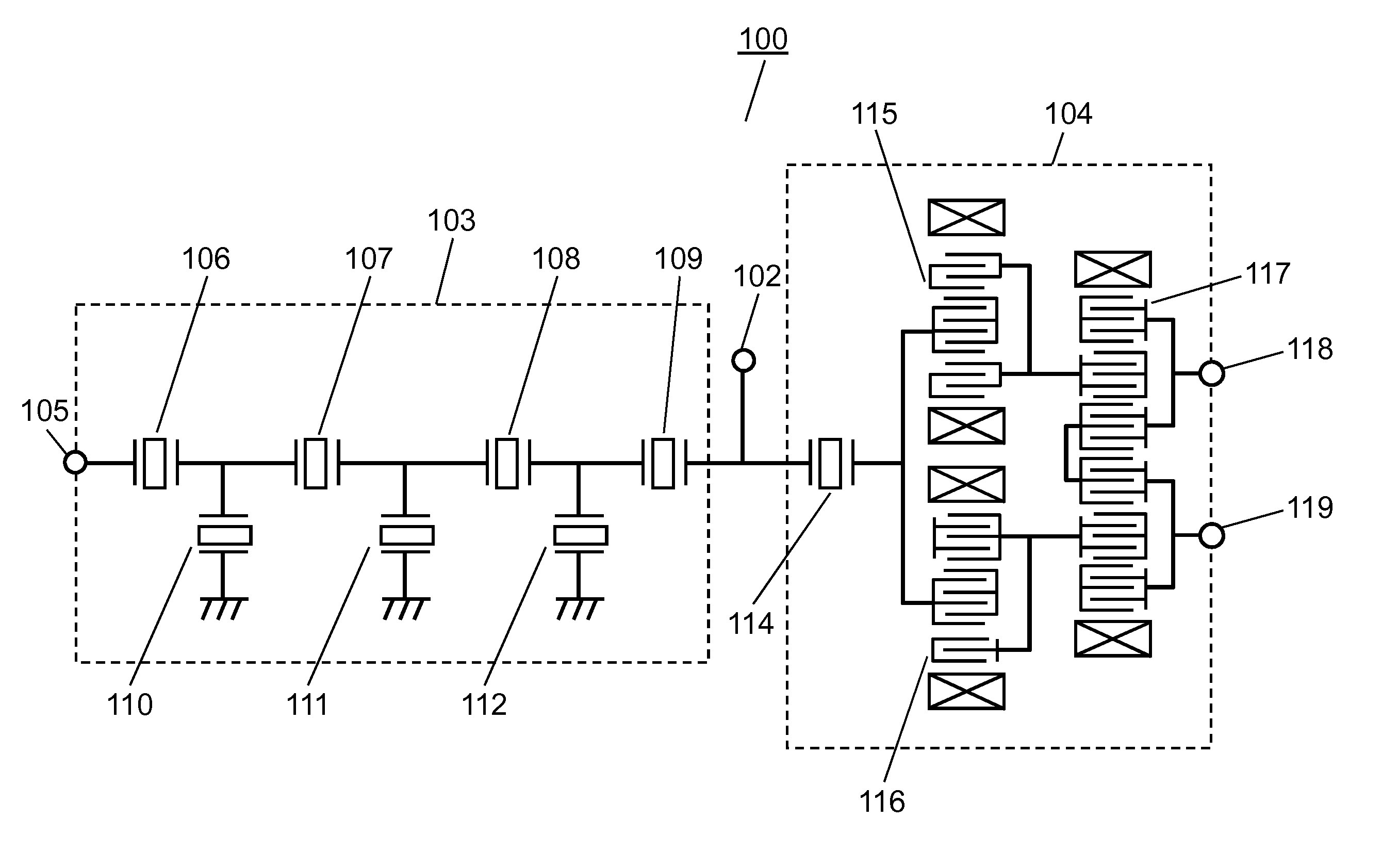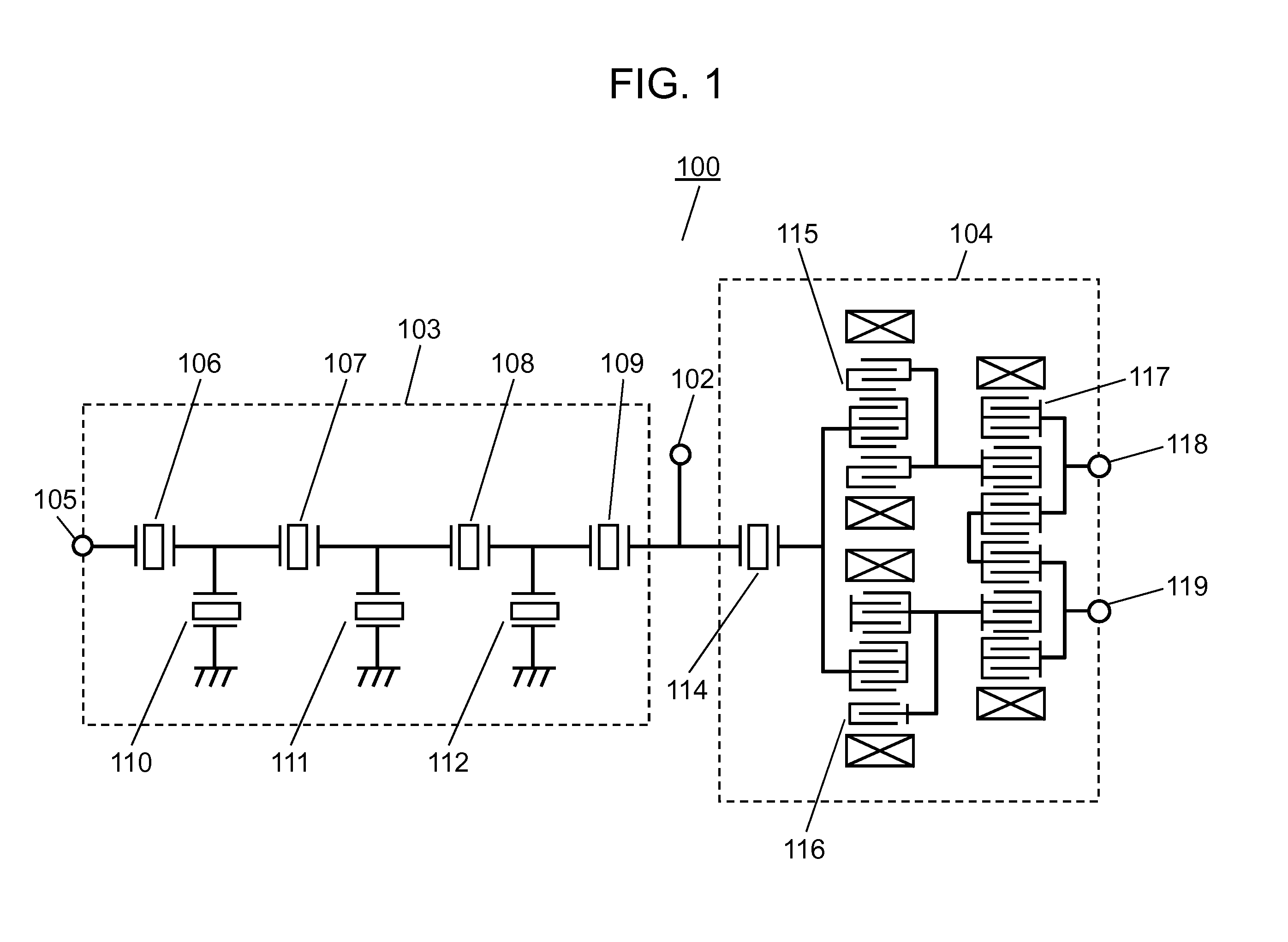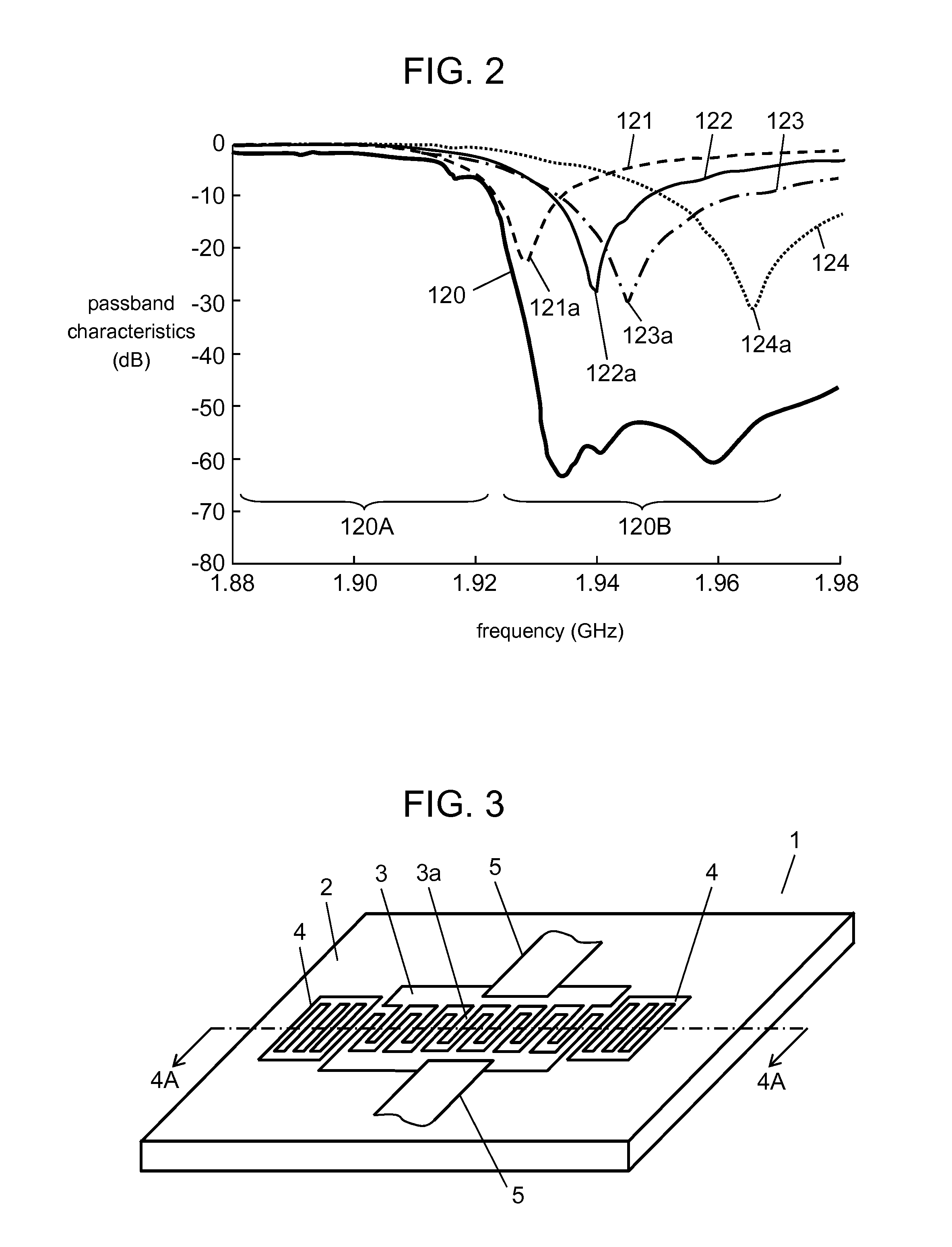Antenna sharing device
a technology of an antenna and a ring, which is applied in the direction of piezoelectric/electrostrictive/magnetostrictive devices, electrical apparatus, impedence networks, etc., can solve the problems of increasing the steepness of attenuation characteristics in frequencies higher than the passband, increasing the steepness of attenuation characteristics in frequencies lower than the passband, and increasing the loss in the receiving passband. , to achieve the effect of increasing the steepness of atten
- Summary
- Abstract
- Description
- Claims
- Application Information
AI Technical Summary
Benefits of technology
Problems solved by technology
Method used
Image
Examples
first exemplary embodiment
[0025]FIG. 1 is a schematic circuit diagram of the antenna sharing device in accordance with the first exemplary embodiment. Specifically, the antenna sharing device is compliant with Band 2 of the W-CDMA (Wideband Code Division Multiple Access) standard.
[0026]Antenna sharing device 100 of FIG. 1 has first elastic wave filter 103 as a transmit filter and second elastic wave filter 104 as a receive filter, both of which are connected to antenna terminal 102.
[0027]In Band-2 antenna sharing device 100, for example, first elastic wave filter 103 allows passage of signals in a transmitting band of 1.85 GHz-1.91 GHz (hereinafter, a first frequency band). Second elastic wave filter 104 allows passage of signals in a receiving band of 1.93 GHz-1.99 GHz (hereinafter, a second frequency band) that is higher than the first frequency band.
[0028]Hereinafter, first elastic wave filter 103 and second elastic wave filter 104 will be described in detail.
[0029]First elastic wave filter 103 is a ladde...
second exemplary embodiment
[0058]The structure of the second exemplary embodiment will be described. The description below focuses attention on differences from the structure in the first embodiment.
[0059]FIG. 8 is a schematic circuit diagram of the antenna sharing device in accordance with the second exemplary embodiment.
[0060]Antenna sharing device 200 of FIG. 8 has first elastic wave filter 103 as a ladder type transmit filter and second elastic wave filter 201 as a ladder type receive filter.
[0061]Second elastic wave filter 201 has series resonator 202, series resonator 203, series resonator 204, and series resonator 205, which are connected in series between antenna terminal 102 and receive terminal 209. Second elastic wave filter 201 further contains parallel resonator 206, parallel resonator 207, and parallel resonator 208. Parallel resonator 206 is disposed between series resonator 202 and series resonator 203 so as to be connected to ground in parallel. Parallel resonator 207 is disposed between seri...
PUM
 Login to View More
Login to View More Abstract
Description
Claims
Application Information
 Login to View More
Login to View More - R&D
- Intellectual Property
- Life Sciences
- Materials
- Tech Scout
- Unparalleled Data Quality
- Higher Quality Content
- 60% Fewer Hallucinations
Browse by: Latest US Patents, China's latest patents, Technical Efficacy Thesaurus, Application Domain, Technology Topic, Popular Technical Reports.
© 2025 PatSnap. All rights reserved.Legal|Privacy policy|Modern Slavery Act Transparency Statement|Sitemap|About US| Contact US: help@patsnap.com



